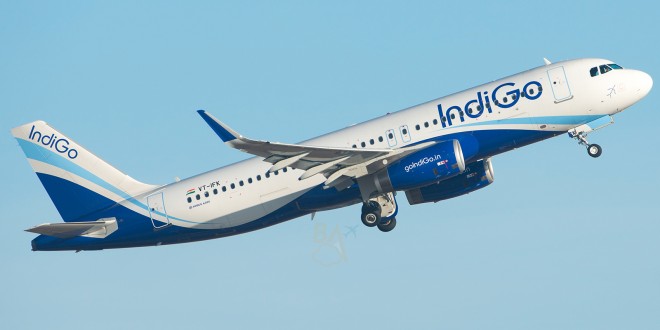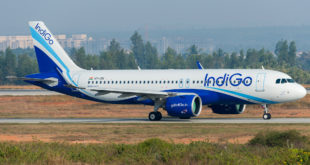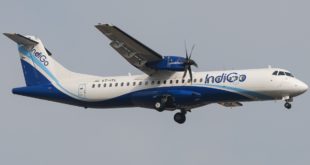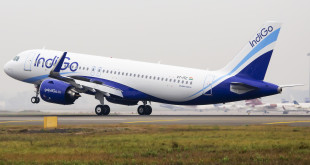The commander of IndiGo flight 6E 176 from Mumbai to New Delhi on August 20, 2014, being performed by VT-IFK with 148 passengers and six crew appears to have ordered a premature evacuation of the aircraft suspecting a fire.
The aircraft has just made a normal landing at New Delhi’s IGI airport at 15:35 (11:05Z). Soon after touch-down the Captain was informed by the air traffic control tower about dense smoke observed on the left side of the aircraft. The Captain immediately ordered the crew to evacuate all passengers. The evacuation was done on the taxiway and completed in approximately 75 seconds.
The airline said all passengers were safe.[bsu_quote cite=”IndiGo statement”]We confirm that all passengers and crew members are safe and have been taken to the terminal building. Some of the passengers who suffered minor injuries during evacuation were given medical attention and taken care of by our airport team as well as five members of our FAC (Family Assistance and Care) team members. They have all left for their homes already.[/bsu_quote]
The airline put out another statement four hours later[bsu_quote cite=”IndiGo additional statement”]With reference to the incident earlier today, IndiGo would like to confirm that only 09 passengers have suffered minor injuries like bruises which can happen while sliding down the chute. One passenger unfortunately suffered a fracture and all were taken for urgent medical attention. Evacuation is the standard operating procedure once the Tower informed of smoke. There was no previous snag and there was no snag detected either on the previous sectors or during last night’s overnight inspection. The aircraft is only 18 months old. All other details will be available after detailed investigation of the part in coordination with Airbus and the OEM.
[/bsu_quote]
Normally if a fire is suspected the ARFF (aircraft rescue and fire-fighting) is notified. This is normal practice at most airport since the ARFF crash fire trucks must reach the aircraft in less than two minutes, and since they will have better visibility around the aircraft, the ARFF can confirm whether it is a fire, or a false alarm. If there is indeed a fire, the tenders can immediately extinguish the fire.
In this case it turned out to be a false alarm with the smoke emanating from the main gear brakes. Some media reports suggest IndiGo has a practice of using the brakes aggressively to reduce use of thrust reversers which tends to heat up the brakes.
READ ONLINE: Jet Airways incident at Mumbai — DGCA release preliminary report, crew suspended
READ ONLINE: Emergency services at Indian airports (our reference article on ARFF)
Similar to Jet Airways 2010 incident at Mumbai
This incident reminds one of the 2010 incident involving Jet Airways’ Boeing 737-800 VT-JGM. Under a false alarm the commander of the aircraft ordered an evacuation of the aircraft resulting in injuries to passengers. The incident investigation report concluded [bsu_quote cite=”Final Investigation Report Jet Airways, B737-800 Aircraft, at Mumbai Airport” url=”http://dgca.gov.in/accident/reports/incident/VT-JGM.pdf”]Wrong decision of the captain to carry out evacuation for non-real emergency situation of imaginative fire from the left engine, leading to the serious injuries to passengers is the most probable cause for the incident.
[/bsu_quote]
It appears a few years hence we will probably read a similar conclusion for the IndiGo 6E-176 incident as well.
 Bangalore Aviation News, Reviews, Analysis and opinions of Indian Aviation
Bangalore Aviation News, Reviews, Analysis and opinions of Indian Aviation




Aggressive Braking: Is this a practice – with some purpose?(perhaps to make a rapid exit into a taxiway & boast an “ontime” arrival!!).
Devesh, your headline is certainly suggestive of this already being a pilot error.
Considering the situation, the pilots and the crew did a fantastic job of evacuating everyone in a short time. Much better than seeing the tonnes of fuel still on board churn 150 bodies to ashes.
If smoke/fire is reported from any part of the airplane, let alone an area where no onboard extinguishing options exist, you just can not risk the 2 minutes it takes for the ARFF to reach you.
You have a point. I must check with a few pilot friends on what is the normal practice.
Please this tweet. https://twitter.com/captranganathan/status/505267124432945152 Capt. Ranganathan is an acknowledged aviation safety expert.